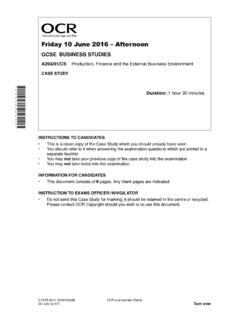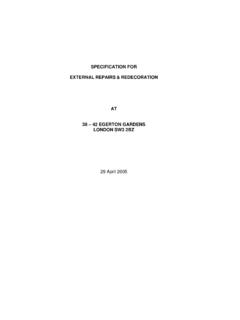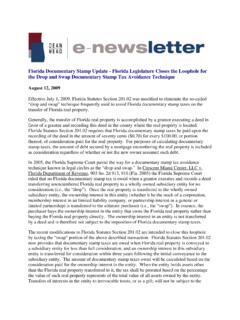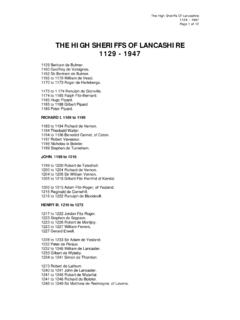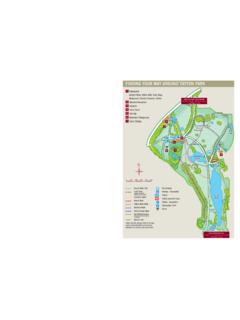Transcription of Family structures by Barry Carpenter with Jo Egerton
1 Working in Partnership through Early Support: distance learning text Family structures by Barry Carpenter with Jo Egerton Early Support distance learning text Family structures Barry Carpenter with Jo Egerton Families and Early Support The Early Support Family pack and accompanying Early Support professional guidance (Department for Education and Skills (DfES), 2004a) are set in a clear framework of service delivery and Family interaction. With Together from the Start (DfES/Department of Health (DoH), 2003), they advocate flexible, Family -centred support that is competent, compassionate, comprehensive, continuous, well-coordinated and culturally sensitive.
2 However, without first investigating how individual families work together, professionals cannot begin to deliver a service which can respond to the changing needs of those families. This chapter seeks to involve readers in considering Family characteristics and their own ethos of responsive and inclusive practice. The policy perspective As Together from the Start (DfES/DoH, 2003) reminds us: There are many common issues for parents of disabled children, but no two families are the same or have identical needs. Families can be diverse in terms of their experience, resources and expectations as well as their cultural, religious and linguistic influences. (p9).
3 The importance of the Family in nurturing children came to the fore in the 1980s and has become increasingly emphasised through policy and in service approaches. The publication of Supporting Families (Home Office, 1998) generated the Family and Parenting Institute, founded upon the premise that, Families are at the heart of our society and the basis of our future as a country. The Institute s three core tenets are: Children must come first Children need stability Families raise children. In the field of special educational needs, the parents role in the parent-professional relationship was emphasised through the DfES Code of Practice on Special Educational Needs (DfES, 2001) which states that: Parents hold key information.
4 They have unique strengths, knowledge and experience to contribute to the shared view of their child s needs and the best ways of supporting them. (p16). In the 2001 Home Office Citizenship Survey, the Home Office Research, Development and Statistics Directorate (2003) asserts: ..improved understanding of Family networks is necessary for the development of effective policy to support families. (p113). However, the Early Support professional guidance (DfES, 2004a) takes this a stage further, stating: Early Support goes beyond the concept of partnership with parents. The starting point is respect for the daily reality of Family life for parents who are raising young children in a situation which presents them with repeated, unusual and unpredictable challenges and which is often highly emotionally charged.
5 Improved service provision means joint decision-making, the right information at the right time and enough continuity of support to enable parents to take decisions and initiate positive action to help their child. (p19). Early Support Crown Copyright 2007 2 Early Support distance learning text Family structures Barry Carpenter with Jo Egerton This is the hub around which today s professionals aim to develop their working practice. Blacher and Hatton (2001) write that, The impact of disability on the Family is clearly reflective of the political and economic climate . Policy and legislation support for the Family within early childhood interventions has never been stronger (Campbell, 2005; Carpenter and Egerton , 2005; Ford, 2005; Russell, 2005).
6 The stance taken by Early Support is underwritten by a raft of government publications Every Child Matters (DfES, 2003), Removing Barriers to Achievement (DfES, 2004b), Together from the Start (DfES/DoH, 2003), the National Service Framework for Children (DoH, 2004), Improving the Life Chances of Disabled People (Prime Minister s Strategy Unit, 2005) and supported by the government programme, Sure Start ( ). Early Support endorses Family -centring approaches, such as the Key Worker Model (Limbrick, 2004, 2005; Limbrick-Spencer, 2000) and the Portage Home Teaching Programme (Cameron, 1997). The Office of National Statistics (Melzer, Gatwood, Goodman and Ford, 2000) confirms that now, in the UK, one in five children has special educational needs.
7 Today, disability is manifested in different ways from those that we have traditionally known. Research suggests an alarming increase in children s disability arising from substance and alcohol abuse (1 in every 300 babies are born with Foetal Alcohol Syndrome Disorder; Boseley, 2004), very premature birth (76% of babies born at 25 weeks gestation have some form of disability; Marlow et al, 2005) and assisted conception (70% of multiple births due to in vitro fertilisation result in disability; Russell, 1998). Therefore, as professionals, we have a responsibility to modify and adapt our practices to cope with alternative Family patterns of caring associated with new patterns of disability (DfES/DoH, 2003).
8 In order to provide relevant and effective early childhood interventions, we have first to appreciate the context in which they will be delivered the Family . A personal perspective1 For a 10-year period during in the 1980s, in both Essex and Warwickshire (UK), my wife Susan and I worked together developing Early Intervention groups for very young children with special educational needs and their families ( Carpenter and Carpenter , 1997). For us, this coincided with the start of our own period of parenting. This was a unifying factor which led to deep bonds being established with many of our families which still exist today despite the changes in our professional lives.
9 The majority of referrals to these groups were received from various professionals social workers, health visitors, pre-school teachers, paediatricians. We found ourselves working with some very disorientated parents, dismayed at the events life had bestowed upon them. However, what we encountered without fail from all of these families was their love for their child. This is a crucial ingredient for successful parenting, and one which, as evidence-based practitioners, we are often reticent to articulate. It is this natural love that will drive the parents of these children on through the inevitable challenges that will arise as part of the child-rearing process.
10 In Meyer s (1995) collection of essays by fathers of children with disabilities, one father writes: Peering into the crib of a child with a disability in the pre-dawn moonlight can bring tears of truly unconditional love love that will not be based on report 1 See also the Early Support distance learning text chapter by Mark Brown and Olivia Trimbee Changing Perceptions for their personal perspectives. Early Support Crown Copyright 2007 3 Early Support distance learning text Family structures Barry Carpenter with Jo Egerton card performance, scores as a star quarter-back, or excellent performance as a respected trial lawyer.










